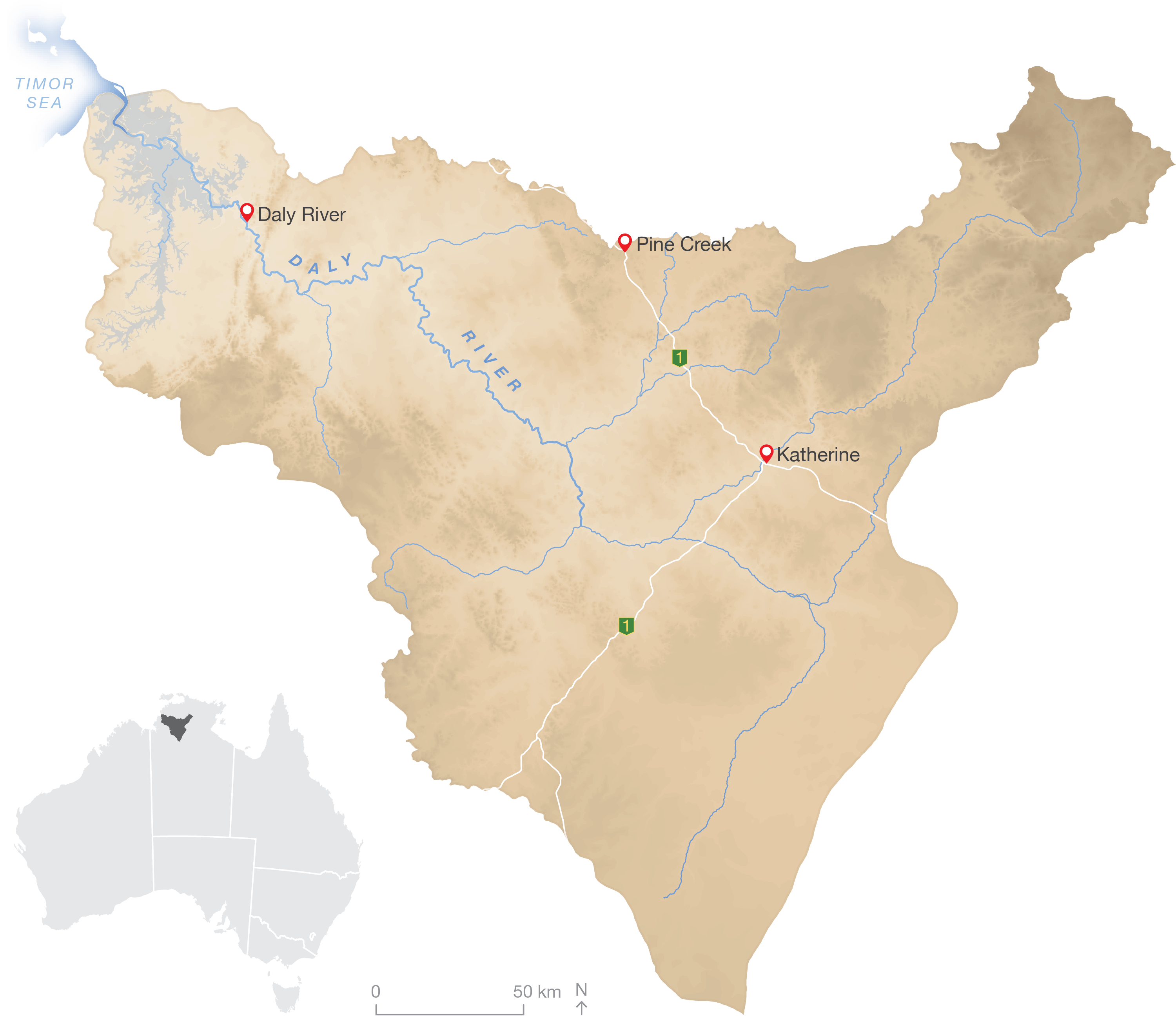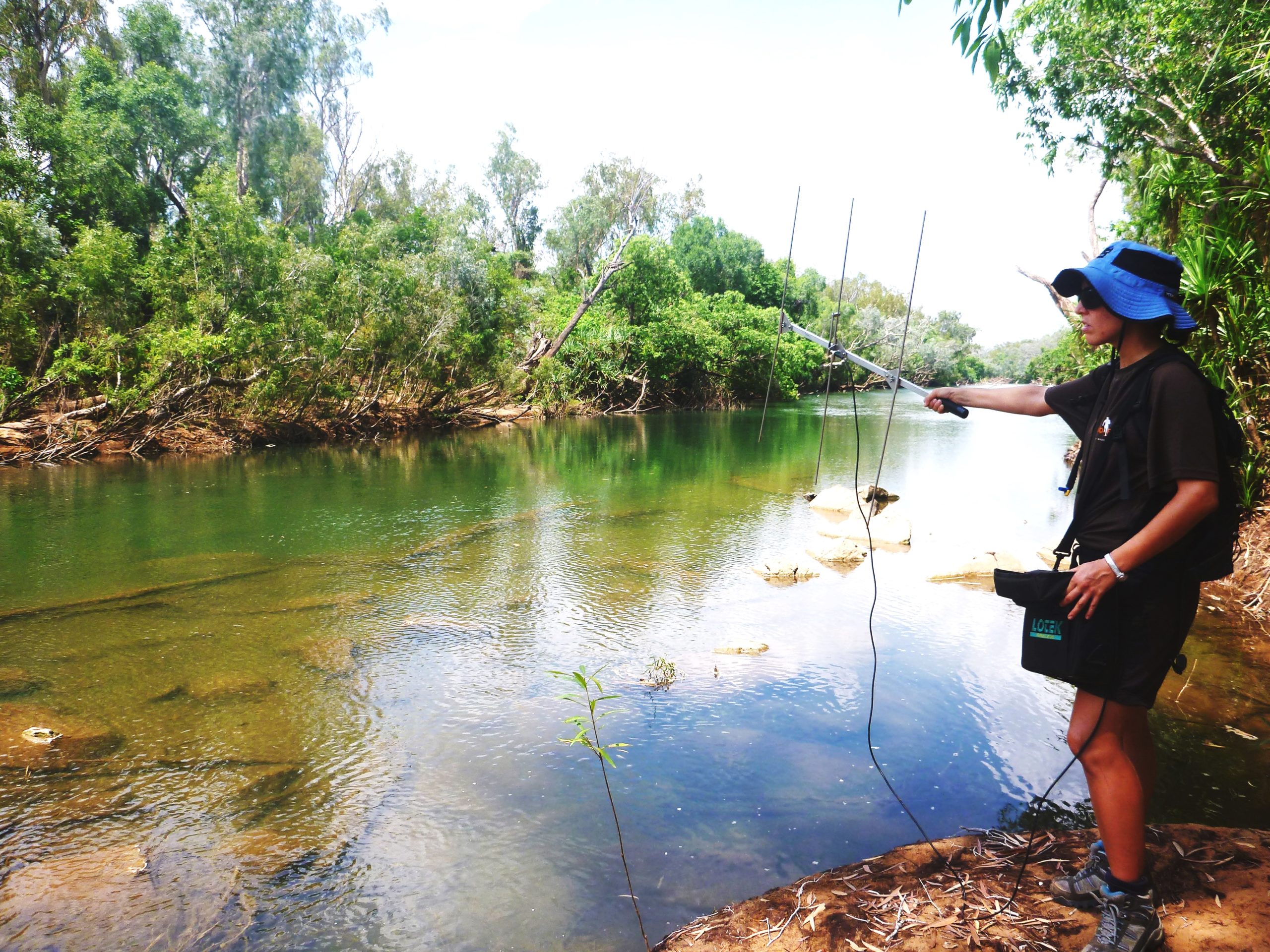2 February 2022
Authors: Jane Thomas and Alison King, Northern Australia Environmental Resources Hub, National Environmental Science Program
Flows are critical for food webs and fish in the Top End’s iconic Daly River
The iconic Daly River is one of the few perennially flowing rivers in the Top End. Its waters support astounding freshwater biodiversity, including more than 90 fish species. New research has shown just how important the Daly’s flows are to the river’s food web and animals such as barramundi, sooty grunter and pig-nosed turtles.
The Daly River in the Top End of the Northern Territory (NT) is world-famous for its barramundi fishing, but being home to “big barra” is just one of many things that make the Daly special.
One of the few perennially flowing rivers in northern Australia, the Daly is home to more than 90 species of freshwater fish, 8 of the 9 freshwater turtle species found in the NT, as well as 3 elasmobranch species of conservation significance. Many of these species, as well as the Daly River and catchment themselves, hold significant value for the Aboriginal Traditional Owners of the area.

The Daly River in the Top End of the Northern Territory. Map: Northern Australia Environmental Resources Hub.
The Daly’s water resources are attracting increasing attention from the agricultural, forestry and mining industries. A research project led by scientists at Charles Darwin University and the Northern Territory Government has generated critical new knowledge about the nature of the Daly’s flows and how they sustain the food web and animals living in the river.
The project mapped and modelled where the water flows in the catchment in both wet and dry seasons, highlighting areas and habitats that are vulnerable to water extraction. The base of the river’s food web – the aquatic plants that are food for cherabin and fish – especially depends on dry-season flows to grow and thrive.
Juveniles of key fish species, including barramundi and sooty grunter, are likely to be impacted if water is taken from the river, particularly during the dry season. Juvenile sooty grunters prefer to live in shallow, fast-flowing riffle habitats which would shrink in the dry season, and there’s likely to be fewer juvenile barramundi no matter when water is extracted.
The iconic pig-nosed turtle may be particularly vulnerable to changes in flows, which could potentially reduce their access to nesting, feeding and basking areas. Pig-nosed turtles especially rely on the thermal groundwater springs that flow into the river, using them to stay warm during the colder dry-season months.
These and other important new findings about the environmental flow needs of the Daly River will help ensure the Daly’s waters and flows are sustainably managed into the future.
This project was led by Associate Professor Alison King of Charles Darwin University and supported through funding from the Australian Government’s National Environmental Science Program through its Northern Australia Environmental Resources Hub.

Tracking sooty grunter in the Daly. Photo: Brendan Adair.
Want to know more about the Resilient Landscapes Hub's activities and our research into practical solutions to environmental problems? Stay informed about activities, research, publications, events and more through the Hub newsletter.